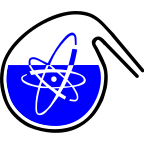Speaker
Description
To evaluate the long-term safety of low/intermediate level radioactive waste repositories and future deep geological repositories for spent nuclear fuel, it is necessary to investigate the behaviour of radionuclides that will be present, such as uranium or lead. Radionuclide migration is affected by interactions with engineering barriers of the repositories, which may also include sorption of radionuclides on the cementitious materials. In this study, the sorption of selected elements on cement phase CSH (Calcium-Silicate-Hydrate, main sorbing phase in cements) was carried out within different conditions (temperature, addition of EDTA, as a selected representative of the organic substances present in the waste). The sorption behaviour of element is described by the distribution ratio (R
Sorption of U and Pb on synthetic cement phase CSH with Ca/Si ratio 1 was studied in a set of equilibrium and kinetic sorption experiments held within range of L/S = 100–800 L kg
Sorption experiments with a synthesised CSH phase in comparison with real cementitious material within several conditions confirmed the dominant role of CSH for sorption of selected radionuclides in cementitious materials corresponding with the higher R
The research leading to these results has received funding from the European Union's Horizon 2020 Innovation Programme under grant agreement n° 847593 (EURAD – CORI). The output was created with the financial participation of SÚRAO (Czech Radioactive Waste Repository Authority) (SO2020-017). This contribution is also partially a result of European Regional Development Fund-Project “Centre for Advanced Applied Sciences” (Grant No. CZ.02.1.01/0.0/0.0/16_019/0000778) and the grant of the CTU Student Grant Scheme No. SGS22/187/OHK4/3T/14.

